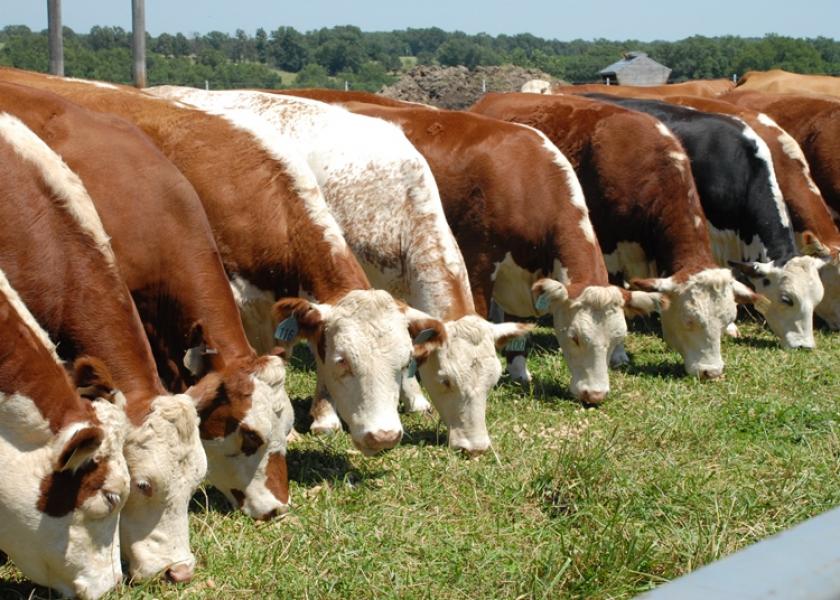Extending the Productive Life of the Stock Cow

By: Jim Krantz, Cow/Calf Field Specialist at SDSU Extension
January 1, 2013 U.S. cow inventory totals documented a 60-year low in stock cow numbers, marking eight continuous years of reduction in the U.S. cowherd. Most analysts predict those totals to indicate further reductions when the January 1, 2014 report is unveiled.
Several factors have contributed to this trend, none more so than the drought of 2012. Cow inventories in the southern U.S. dwindled by as much as 12 percent while northern herds recorded liquidation estimates of about half that amount. In addition to the drought, escalating feed costs, farmer/rancher age and the conversion of hay and pasture land to crop acres were significant factors contributing to stock cow inventory reductions.
At the same time, record cattle prices have cushioned the effect of skyrocketing feed costs and the spring and summer weather patterns of 2013 have replenished most of the forage supplies that were virtually depleted just a year earlier. That scenario has many cattlemen faced with the dilemma of retaining additional replacement heifers to build herd totals or purchasing bred cows or heifers to accomplish that goal this fall or winter. Keeping additional heifers is a difficult choice for many due to the value of those same heifers. The decision to purchase cows or heifers is no less painful at a time when they are demanding record prices.
Extending the productive life of stock cows already within the herd is one option that might deserve some consideration by cattlemen as an alternative method of maintaining or building cow numbers. Culling cows is a normal management practice employed by herd managers to make room for younger, more productive cows, improve herd genetics, eliminate structural concerns with some individuals, eliminate disposition concerns with others or to market non-pregnant ones. However, for cows nearing the end of their productive contributions to the profitability and sustainability of the cow/calf enterprise, there may be some ways to extend those productive years:
- At a time when grazing and haying acres can be in short supply, drylotting this older generation of females may add a year or two their respective lives. According to the 2007-08 NAHMS survey, about one/third of the cows culled are culled because of age or limited/no teeth. Under drylot management systems, at least some of these cows may have an extended future due to delivered diets of high quality feeds and a little special care.
- Dystocia (calving difficulty) has a documented negative impact on reproductive success within the cowherd, either by increasing the timeframe for the cow to return to estrus or resulting in her being non-pregnant in the fall. (Spring-calving herds) Mating older cows to bulls with average or below EPD’s for birth weight should allow her to calve unassisted and be reproductively sound during the following breeding season.
- Internal and external parasite control is an accepted management practice for all cows, but in no way can it be optional, for cows nearing the end of their productive lives. If drylotting is the method used to extend the years of a cow’s presence within the herd, internal parasites may not be a concern unless she does spend some of her time on grass. However, fly control is a must, even if these cows remain on grass. Lice control is also essential and often treatment for both of the above conditions can be accomplished in one process.
- Sorting cows by body condition score and managing them based on nutritional need is advisable during the last trimester of pregnancy but this practice may offer extended production years for older cows during other segments of the cattle cycle. Aged cows may not be good candidates for corn stalk grazing or other aftermath feeding as well. Selecting a group of older cows to be fed separately year round, including the use of pastures with higher quality grasses for short periods of time may keep them in the herd to produce additional calves and eliminate the need to purchase high-dollar bred cows or heifers.
- Pay extra attention to the younger cows in the herd as well as replacements that are added. If fewer young cows are culled due to reproductive failure, that should reduce the culling rate and make maintaining or expanding cow number easier and less expensive.
While the cattle industry enjoys some of its record setting years, challenges remain in maintaining or increasing cow numbers due to increasing bred cow and heifer values as older cows are culled from the herd. As mentioned above, record prices for heifer calves may make it difficult to justify keeping additional replacement heifers for that purpose as well. However, using some existing management practices that cater to the needs of veteran-producing cows within the herd may extend their productive lives and contribute to the sustainability of the cow/calf enterprise.







